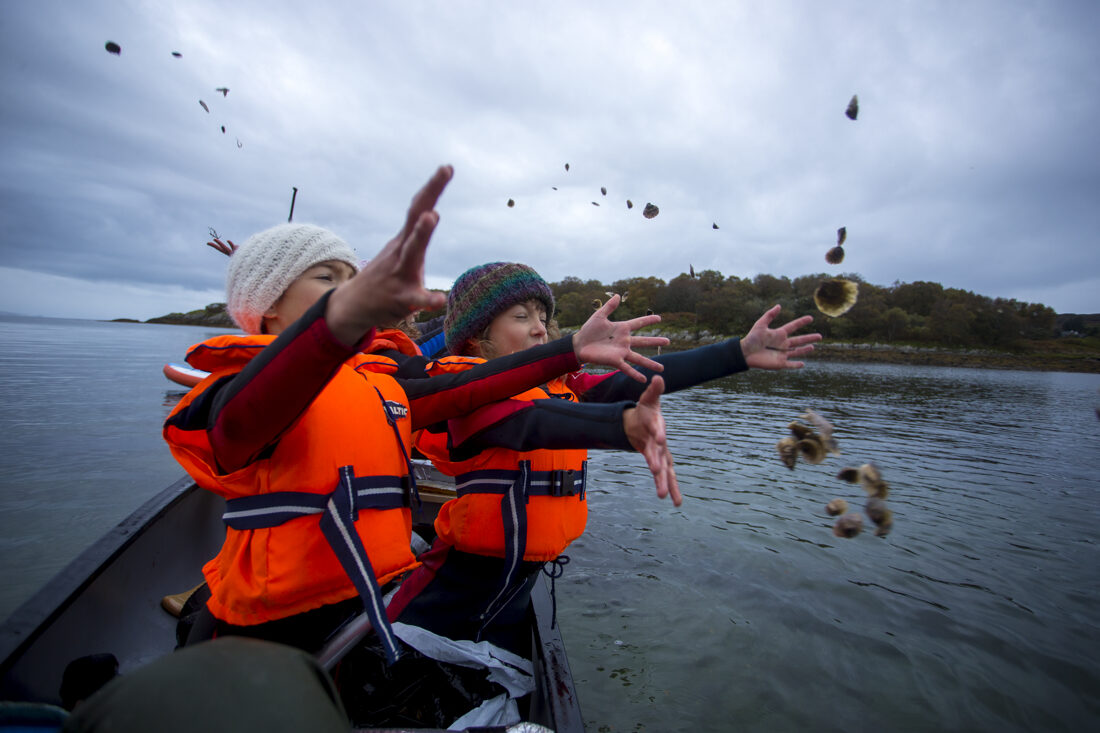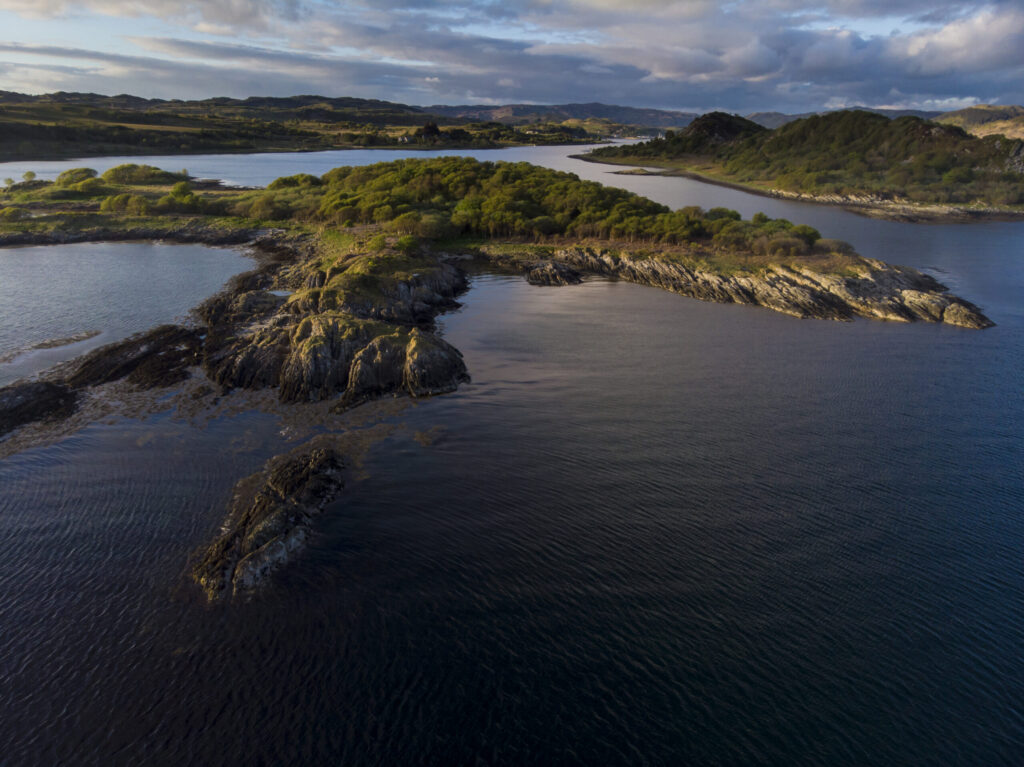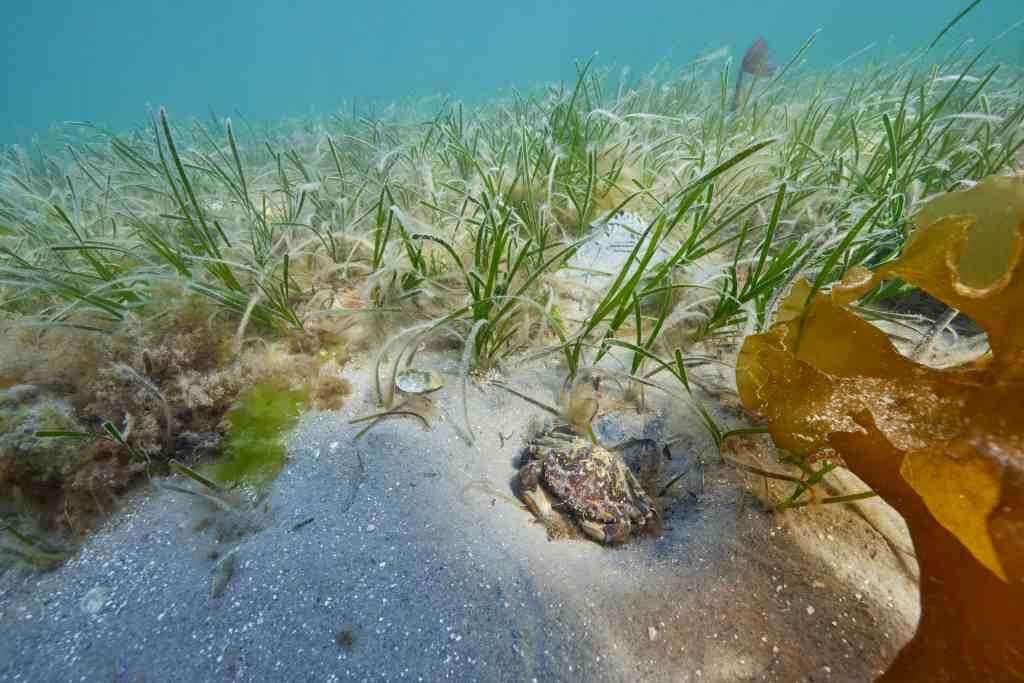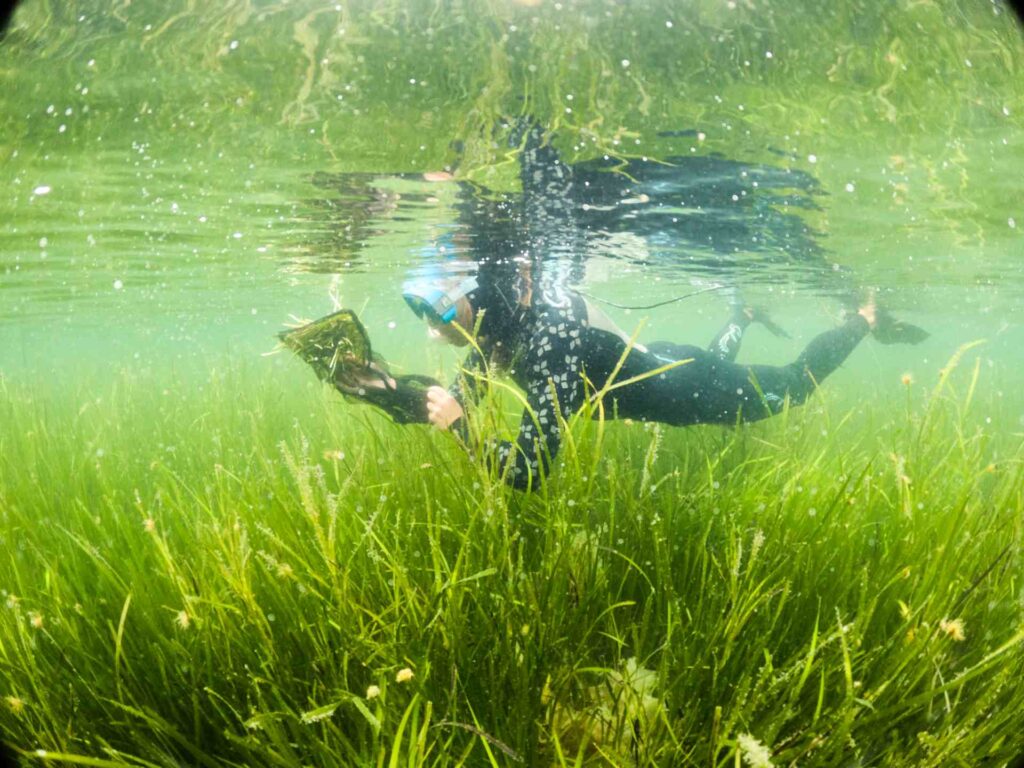Scottish NGO Seawilding is working to restore seagrass beds and oyster populations in Loch Craignish, while supporting the creation of green jobs. Joining the European rewilding network will amplify the benefits for nature, climate and local communities.

Pioneering restoration
 In the waters off the United Kingdom, long-term pollution, disease and overexploitation have taken their toll on both seagrass beds and European oyster populations. It is estimated that the UK may have lost more than 90 percent of its historical seagrass meadows, negatively impacting carbon storage and biodiversity.
In the waters off the United Kingdom, long-term pollution, disease and overexploitation have taken their toll on both seagrass beds and European oyster populations. It is estimated that the UK may have lost more than 90 percent of its historical seagrass meadows, negatively impacting carbon storage and biodiversity.
But in Loch Craignish, an inlet of the sea on Scotland’s west coast, Scottish NGO Seawilding is working to turn this ecological degradation around. By the end of 2022, efforts carried out as part of this pioneering community-led rewilding initiative will have seen 0.5 hectares of seagrass (common eelgrass) planted and 220,000 European oysters restored to the seabed.

Critical marine species
The European oyster (Ostrea edulis) and common eelgrass (Zostera marina) are two very different marine species, but both play a hugely important role in the ecosystems where they occur. The former, also known as the native oyster, is an amazing ecosystem engineer, filtering and cleaning more than 200 litres of water every day. It also helps to mitigate the scale and impact of climate change – oyster “reefs” contain significant quantities of carbon, as well as hosting an array of other marine life.
Common eelgrass, a type of seagrass, is also considered a keystone species. Seagrasses are generally limited to coastal waters (since they need sunlight), but can capture carbon up to 35 times faster than tropical rainforests. While they only cover a tiny percentage of the seafloor, this means they absorb 10% of the ocean’s carbon every year, making them an incredible nature-based climate solution. Seagrass beds also host a wide-ranging biodiversity and are a nutritious food source for many marine wildlife species, such as turtles and dugongs.

Exchanging best practice
Seawilding has just become the latest member of Rewilding Europe’s European Rewilding Network (ERN). This will give members of the Seawilding team access to the collective knowledge and expertise of the entire ERN membership, and in return allow ERN members to learn about and benefit from the Scottish NGO’s efforts.
“We’re really happy to be joining the ERN,” says Philip Price, a professional photographer and Seawilding’s communications manager. “It is essential that we all share our successes and failures in the marine habitat restoration field. We are such a young movement, and so little is known about marine rewilding at landscape scale, exchanging best practice with European rewilding partners will be really beneficial.”

Empowering communities
Seawilding is the UK’s first community-led native oyster and seagrass restoration initiative, involving volunteers, schoolchildren, a local yacht centre, and various academic institutions. In addition to restoring biodiversity and boosting carbon storage, the aim is also to create green jobs. By the end of 2022, the NGO will have trained over 60 community volunteers in coastal biodiversity surveying, baseline monitoring, and native oyster monitoring. Around 200 children will also have been engaged in citizen science education programmes.
“We want to create methodologies by which seagrass rewilding can be carried out at community level in a cheap and easily replicable way,” says Philip Price. “By pioneering low-cost, best practice marine habitat restoration, we can transform Loch Craignish into a seagrass restoration training ground, empowering other coastal communities to follow in our footsteps and scaling up the benefits for people and nature.”
The importance of marine rewilding
Marine rewilding involves protecting areas from human interference, as well as species reintroduction and restocking. It is as important and effective as terrestrial rewilding, not least because of the ocean’s innate capability of storing “blue carbon” in habitats such as seagrass meadows, tidal marshes, mangroves, and deep sea sediments. Marine wildlife species such as whales and sharks also play a critical role in the global carbon cycle.
As part of Rewilding Europe’s Strategy 2021-2030, we aim to expand the number of rewilding landscapes where we showcase practical rewilding from 10 to 15. These five new landscapes will include marine and coastal ecosystems for the first time.
A platform for exchange
Today rewilding is gaining momentum as a progressive and effective approach to conservation in Europe. Underpinning this trend, the burgeoning European Rewilding Network continues to foster collaboration and amplify results.
Founded by Rewilding Europe in 2013, the aim of the ERN is to enhance the efforts of each member by facilitating the exchange of skills, insight and experience. Members meet regularly, usually via webinar, while nature-based businesses can also apply to Rewilding Europe Capital, Rewilding Europe’s enterprise loan facility.
Rewilding Europe extends a warm welcome to all European rewilding initiatives that focus on practical, result-oriented rewilding and encourages them to apply for ERN membership.
